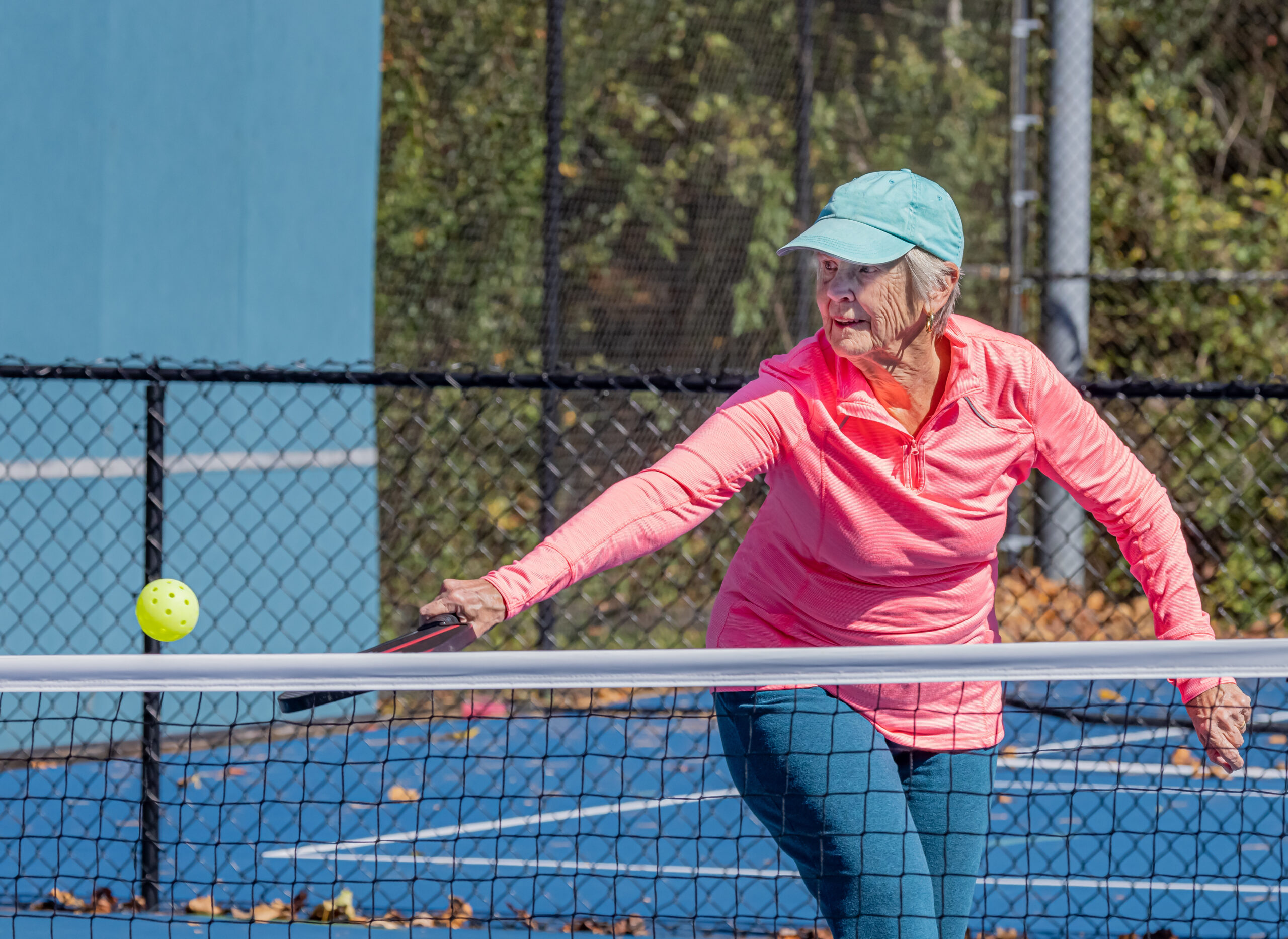Pickleball, celebrated for its accessible play and dynamic atmosphere, is swiftly ascending as one of the most popular sports in the United States, particularly within senior communities. While offering numerous health and social benefits, the proliferation in the sport’s popularity also brings about an uptick in related injuries, particularly for the senior community seeking healthy exercise routines.
Understanding the Risks
The increasing number of pickleball players has led to a surge in common injuries such as strains, sprains, and broken bones. The lower extremities are often affected, with individuals experiencing traumatic injuries to the foot and ankle, including Achilles tendon strains, calf muscle tears, and ankle sprains. Knee injuries, such as sprains, are also prevalent.
Upper extremity injuries should not be overlooked. Overuse injuries such as tendonitis of the elbow (termed as pickleball elbow) and shoulder tendonitis are common, as are acute injuries like wrist and elbow fractures due to falls on an outstretched arm
The Importance of Prevention
This wide spectrum of potential injuries underscores the paramount importance of preventive measures. Employing the correct technique during the game, ensuring adequate preparation including proper stretching and warm-ups, and using appropriate equipment can significantly mitigate the risk of injuries. Being aware of the body’s limits and avoiding overexertion is also crucial.
Timely Medical Attention
Immediate and appropriate medical attention for any injuries sustained during pickleball play is vital. It helps in averting further complications, ensuring a speedy and effective recovery. Early intervention and adherence to prescribed rehabilitation can help injured players return to the court healthier and stronger.
Staying Vigilant
For pickleball enthusiasts, especially seniors, vigilance and proactive care for the body are indispensable. These steps not only enhance the enjoyment of the game but also ensure that players can relish this exhilarating sport safely and effectively for a longer time. Awareness about the possible injuries and consistent efforts towards prevention and care can make pickleball a safer and more enjoyable sport for everyone, regardless of age.
Enjoying Pickleball Safely
In the midst of the sport’s growing allure, embracing a comprehensive understanding of the potential risks and adhering to preventive and safety measures are essential to fully enjoy the physical and social benefits of pickleball.
This balanced approach enables individuals, especially seniors, to remain actively engaged in pickleball, fostering both physical health and community bonds while minimizing the risk of injuries.
List of Common Pickleball Injuries
Lower Extremity Injuries:
- Achilles Tendon Issues (Strains and Tears)
- Calf Muscle Tears
- Ankle Sprains (Medial and Lateral)
- Knee Injuries (MCL Sprain,) ( Medial and Lateral Meniscus Tear)
- Foot issues (Plantar Fasciitis)
Upper Extremity Injuries:
- Elbow Injuries (Tendonitis, Fractures, Tennis Elbow – Lateral Epicondylitis, Golfers Elbow – Medial Epicondylitis)
- Shoulder Issues (Proximal biceps tendonitis and Distal Biceps Tendonitis, Rotator Cuff Tendonitis, and Rotator Cuff Tears)
- Wrist Problems (Fracture, Scaphoid Fracture, Tendonitis)
Other Injuries:
- Back Issues (Low Back Strain, Lumbar Disc Herniation)
- Hip and Leg Issues (Iliotibial Band Tendonitis Hip, Patellofemoral Pain, Quadriceps Tendonitis.



